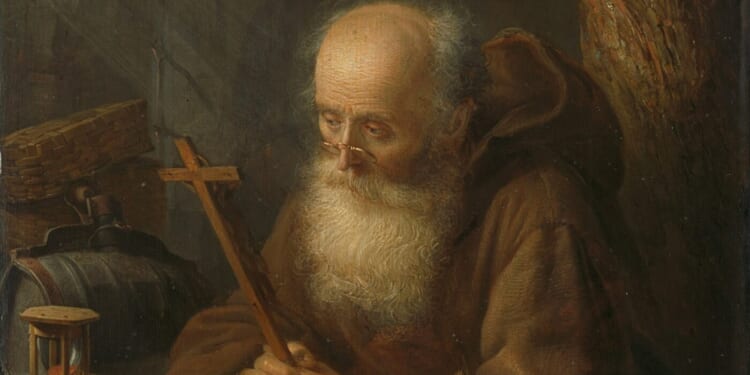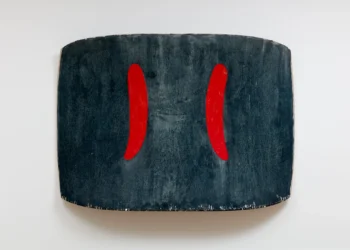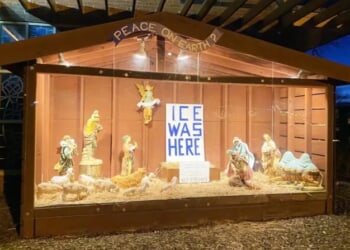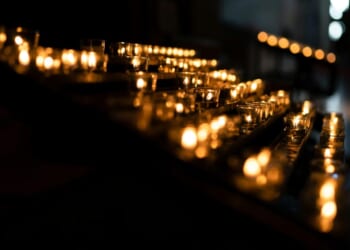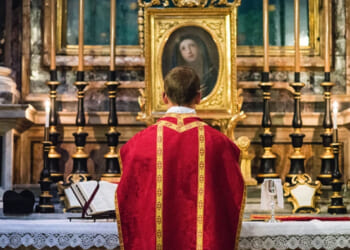God speaks to human beings through beauty. That is, Our Lord uses sensible realities to reach the human psyche, to touch our souls and captivate our hearts. Relying on the classical definition of beauty, made clearest in the thought of St. Thomas Aquinas, a thing is beautiful if it coheres and will not fall apart; if it is balanced and fits well together; if it shines forth a proverbial light that transcends itself. Beautiful things include sunsets, gardens, waterfalls, Gothic architecture, libraries, diligent scientific experiments, and the human person rightly understood, all of which can open a deeper conversation with the divine.
Art is another reality that can be—and often is—beautiful. Our Catholic Faith tells us that art is a “distinctly human form of expression,” produced from the “superabundance of the human being’s inner riches,” which are gifts from the Creator. Art arises from God-given talent and skill, and it seeks to provide access to a loftier reality “in a language accessible to sight or hearing” (CCC 2501). In a unique and powerful way, artistic effort gives humans the capacity to express their relationship with the creative and providential God. Following that, the same efforts allow hearers and viewers to enter a conversation with God. This is particularly what visio divina—the process of praying with sacred art—facilitates for those who gaze on paintings, sculptures, or other forms of visual art.
In recent weeks and months, I have engaged this process with two paintings, specifically. I have conversed with God about certain details and patterns in the paintings, considering how they might offer a lens into my own mind and heart. The messages from the Lord have resonated deeply with me as they have opened new understandings about God, myself, and the way He is calling me to operate daily. And then I respond to Him, usually by asking more questions.
The first painting is The Holy Family in the Carpenter’s Shop, one of my absolute favorite pieces of art. It is a technical and spiritual masterpiece, produced by Gerard van Honthorst in 1610. The artist employs techniques and details that allow anyone to enter prayerful meditation about encountering the Lord through the mundane, hidden details of life. This may be especially true for spouses, parents, and laborers.
Honthorst was part of a group of Dutch artists known for employing chiaroscuro, using deep contrast between darkness and light in the scene to illustrate important points or themes. In a fascinating way, Honthorst used darkness at the edges of the scene as a shroud, something to protect a great mystery within. He also employed a single candle—his signature detail—to depict the source of light at the center of the scene. These details in the painting may cause a viewer to ask some specific questions: Is there darkness in my life that needs to be driven away by the light of Jesus Christ? Is my life hidden from the outside world, but still beautiful and fruitful because Jesus’ light illuminates it?
Other details incite more questions. In the painting, Jesus is about eight or ten years old, and He is learning from His earthly father. All the while, Mary’s right hand rests on his shoulder, and her left hand guides His as he holds the candle for Joseph. The details remind us that Jesus, although He is a divine Person, grew in knowledge and skill. They also remind us of the beautiful unity of the Holy Family of Nazareth. Finally, we see that Joseph diligently created a new thing from his storehouse of tools, virtues, and wisdom.
As I see these details, am I inspired to develop my own knowledge and skills for the sake of flourishing in life? Am I committed to fostering family relationships in ways that allow my spouse or children to flourish? Am I inspired to create something that will assist another person or beautify that person’s world? How can my work draw from the storehouse of wisdom within me? How can my work bring that wisdom to others?
The second painting that has resonated deeply with me recently is Christ in the Storm on the Sea of Galilee, by Ludolf Bakhuizen. Bakhuizen used his artistic skill for producing maritime paintings to connect viewers with one of the most miraculous episodes in the Gospel accounts. His depiction contains quite a few details that highlight the moral and spiritual truths of that biblical moment.
A viewer probably notices first the dark clouds and stormy sea enveloping the scene. This dark storm has deep spiritual symbolism, and the viewer can identify this backdrop with his or her own temptations, traumas, and tragedies; or with the dire situations visible in the wider world. What storm is brewing, currently or from my past, and how must I navigate it?
Small shafts of light pierce through the darkness on either side of the painting. The light from the left edge falls on the painting’s largest wave, which is about to overcome the central object—the boat carrying Jesus and the apostles. The artist’s use of light in this way illuminates at least two important truths of the Christian life. First, we see problems best with the aid of divine illumination. The Christian is not to think that problems do not exist but, rather, to view the problems of history and society and interior psychology in light of the truth that God has revealed. Second, it gives visual expression to the Christian virtue of hope. Even with portentous storms creating a disruption, there is still hope that peace will be regained, which we know because of Jesus’ words and actions in the biblical episode.
These are just two works of art, and a small handful of details from each, that have potential to incite a robust, beautiful, and ongoing conversation with the Lord, if we are willing to have it. The process of visio divina, praying with sacred art, allows us to do just that—deepen our encounter with God, who desires to be in covenant with each of us. My prayer is that each of us takes the opportunity whenever we see great art—in our homes, in museums, in our parishes and cathedrals, or anywhere else.
Author’s Note: The reflections in this article are based on essays contained in my new book, Praying with Sacred Art: Pondering the Mystery of Redemption Through Visio Divina, now available from Sophia Institute Press. My sincere hope is that the book aids readers in encountering Our Lord as the liturgical year unfolds.

